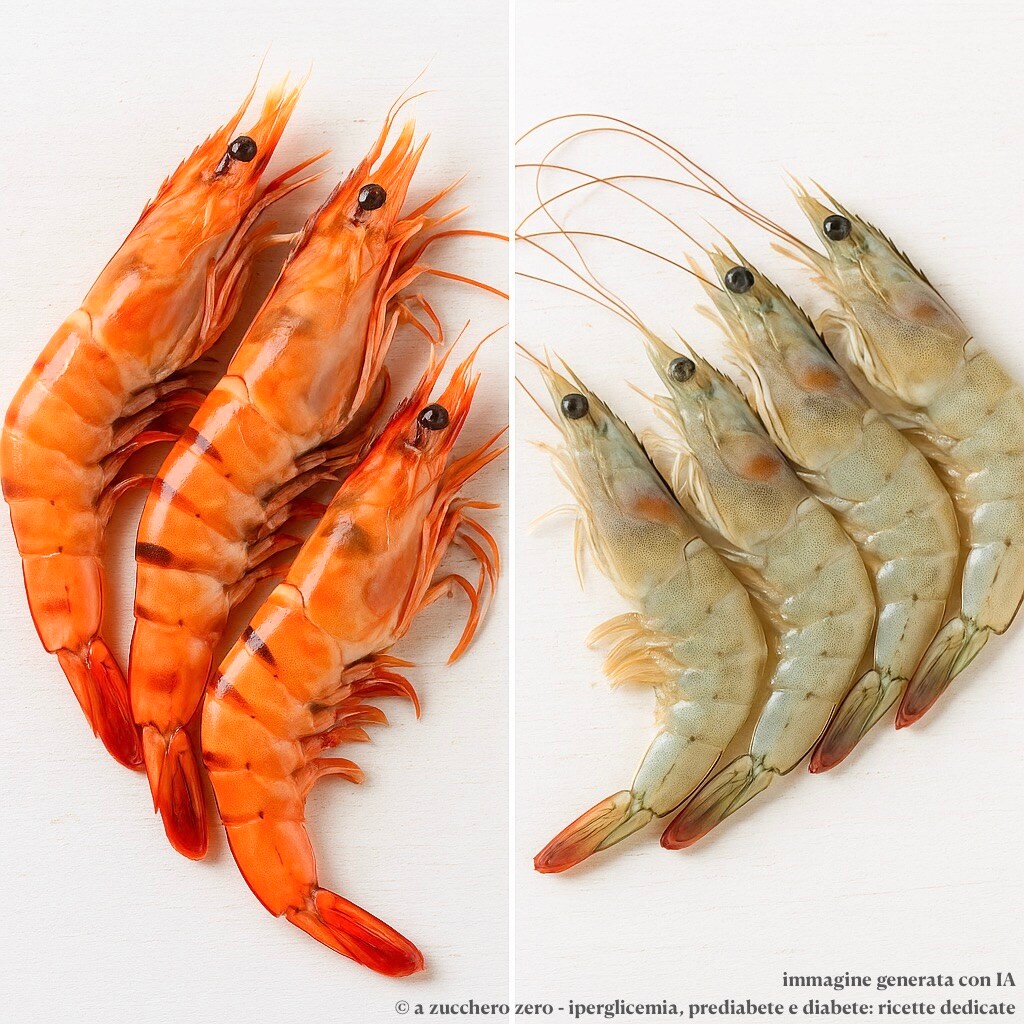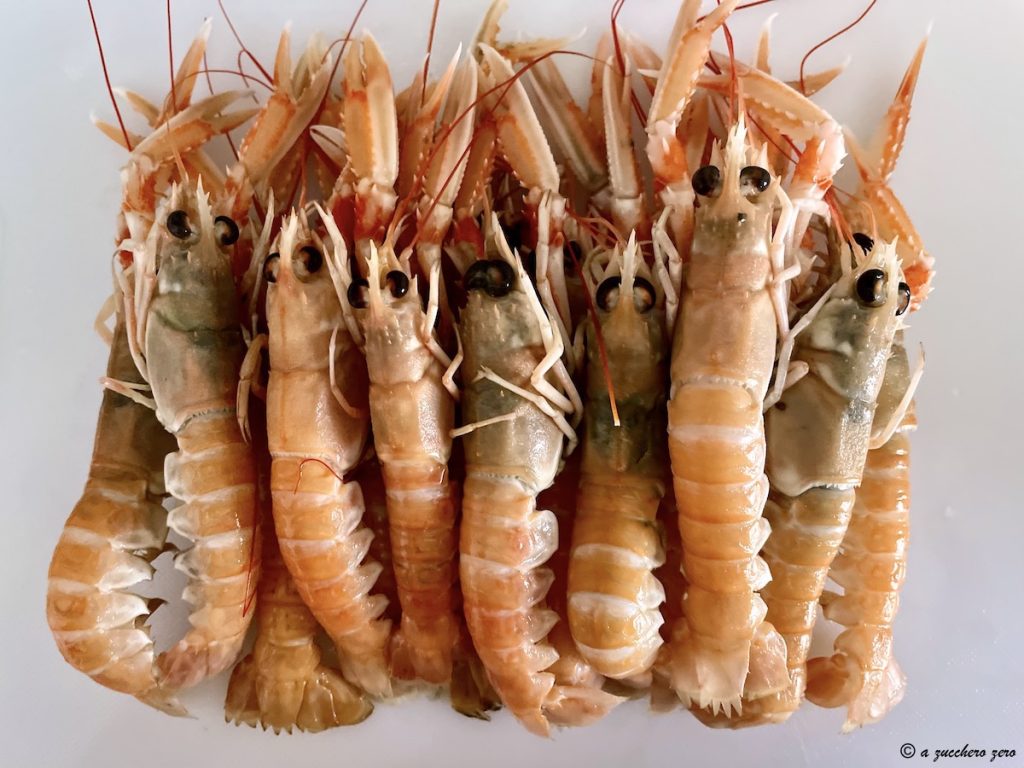A step-by-step tutorial on how to clean prawns and shrimp, plus an important note on shellfish in the diet.
Prawns, from larger prawns to smaller shrimp
For convenience, I often use larger prawns instead of smaller shrimp: peeling and cleaning a few larger prawns per person is certainly easier than peeling and cleaning a whole portion of shrimp.
Prawns in the diet
Prawns, from larger prawns to smaller shrimp, are shellfish low in triglycerides but high in cholesterol and also contain a small amount of available carbohydrates.
For these reasons, they are not included in all diets.
In our dietary plan, prawns are present but classified as foods to be consumed occasionally.
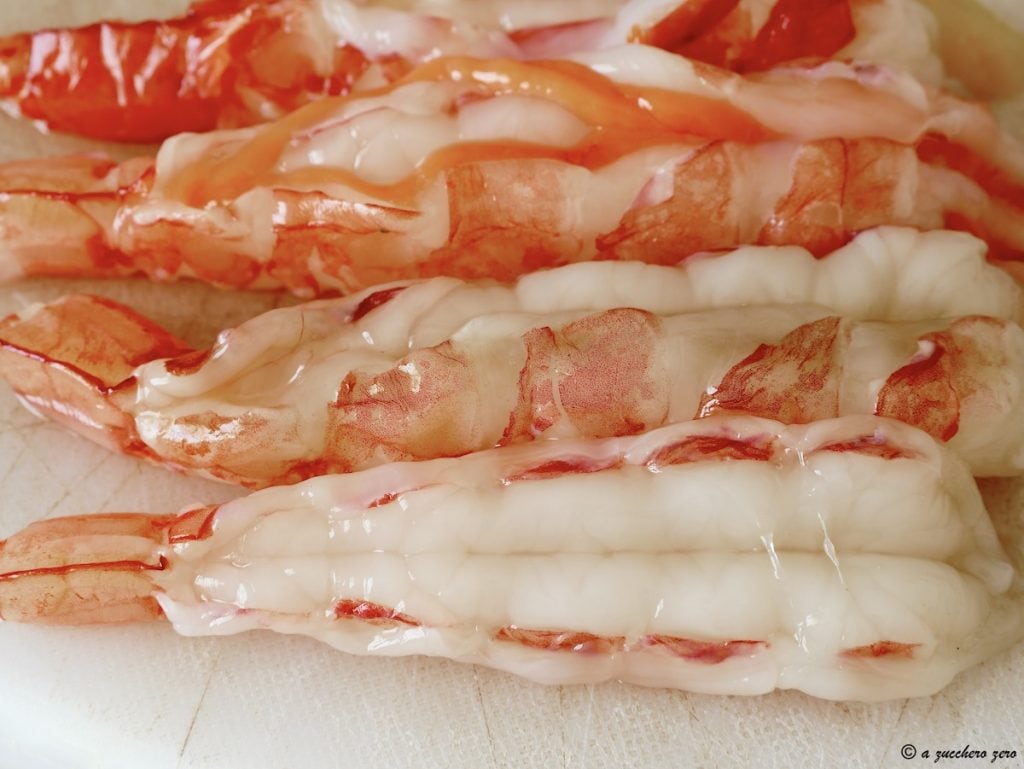
- Difficulty: Easy
- Cost: Medium
- Preparation time: 20 Minutes
- Cuisine: Italian
Ingredients
I usually use no less than 4 prawns per person.
- prawns (weight according to dietary plan)
Suggested Tools
- Colander
- Knife
- Cutting Board
- 1 Toothpick
- Paper towel
How to Clean Prawns and Shrimp
This procedure also applies to shrimp.
If the prawns are frozen/defrosted, let them thaw until they are soft to the touch: it will be easier to clean them without breaking.
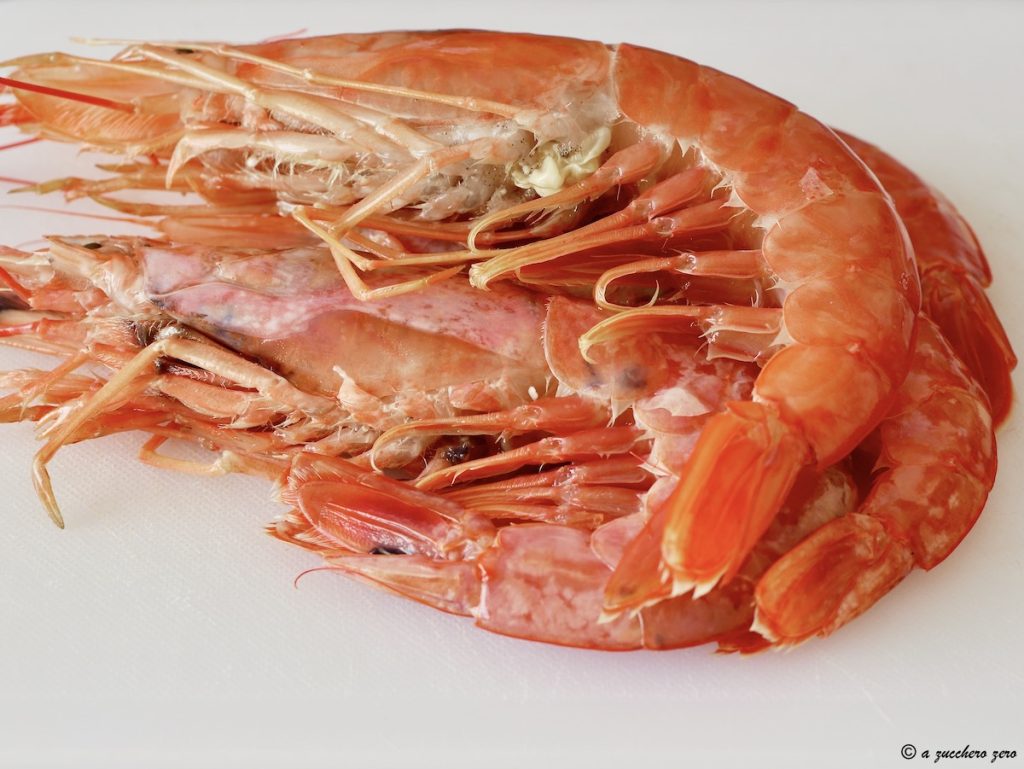
Gently detach the heads from the bodies of the prawns.
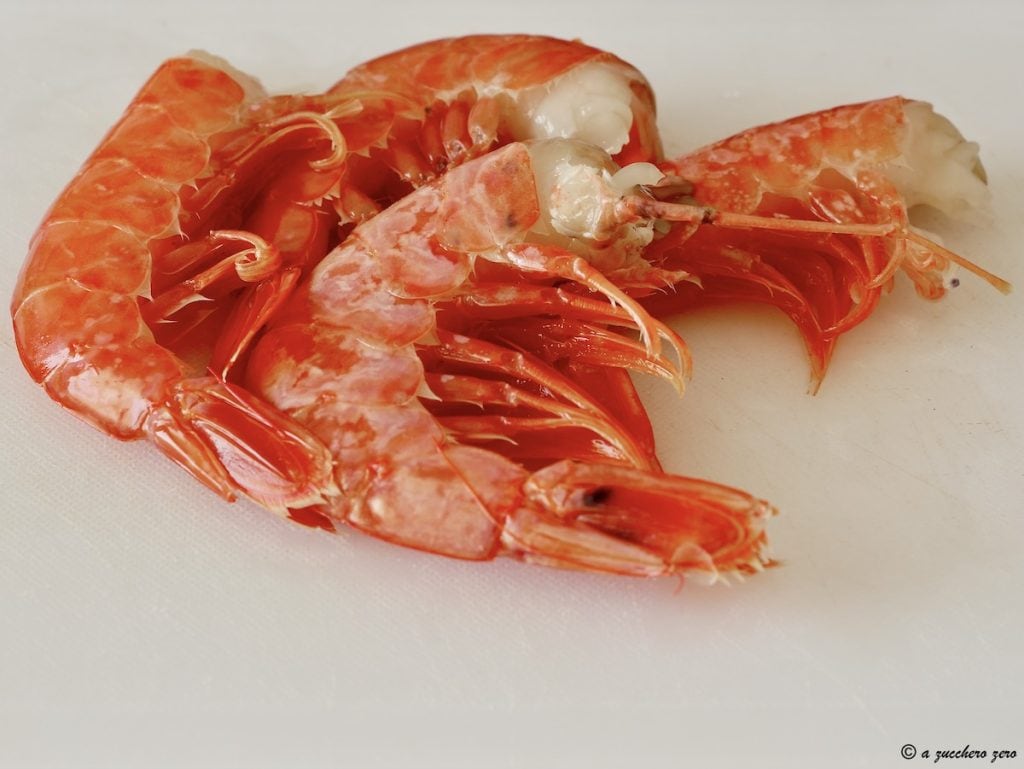
CLEANING THE PRAWN HEADS
Rinse the heads under running water as if washing a small container until removing internal organs and residues.
Let them drain in a colander.Set them aside: they are perfect for making a prawn head broth or a prawn sauce.
CLEANING THE PRAWNS
Shell the prawns.
Then:
– with a sharp knife, make an incision along the back of the prawn;
– with a toothpick or the tip of the knife, extract the black vein.The black vein is the prawn’s intestine.
Its content is not toxic but can ruin the dish:
– it is unpleasant to look at and taste;
– it may contain sand or residues.
It is always better to remove it.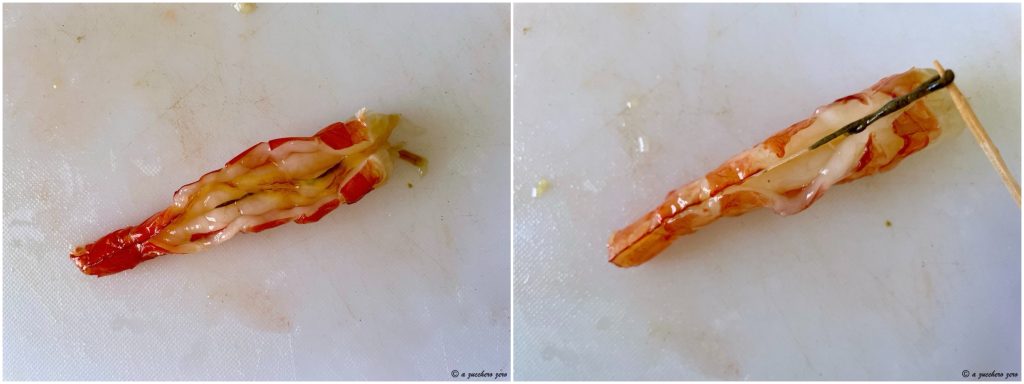
Rinse the shelled prawns thoroughly under running water.
Let them drain.
Pat the residual water with kitchen paper.
Your shelled and cleaned prawns are ready.
You can use the shelled and cleaned prawns whole or cut into pieces.
Storage, Tips, and Variations
Store cleaned prawns in the refrigerator in a closed container or a freezer bag.
Take the prawns out of the fridge at least half an hour before cooking them.
Consume them within 24 hours or freeze them immediately after cleaning but only if they were not defrosted [do not refreeze].
Prefer fresh prawns or those slowly defrosted in the refrigerator for better cooking results.
FAQ (Frequently Asked Questions)
Can I cook prawns with the shell?
Yes.
The shell better retains juices during cooking and can add more flavor.
Wash prawns with shell thoroughly and remove the black vein before or after cooking, preferably before.Should the black vein always be removed?
The black vein is the prawn’s intestine.
Its content is not toxic but can ruin the dish:
– it is unpleasant to look at and taste;
– it may contain sand or residues.
It is always better to remove it.What is the difference between prawns and shrimp?
Without going into anatomical details, the main differences that allow us to distinguish prawns from shrimp at the fish counter are:
– color: prawns tend to be red-orange, while shrimp are gray with pink or brown hues.
– size: generally, shrimp are larger than prawns.
– taste: prawns have a stronger and more flavorful taste, while shrimp are more delicate and sweet.
– nutritional values: both are low-calorie, prawns contain more fats but less cholesterol compared to shrimp.